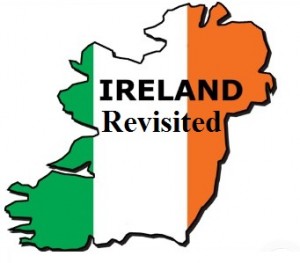Ireland Revisited: Part 19
 The Provisional IRA’s ceasefire raised hopes initially amongst many in the Northern Ireland community that a peaceful solution could finally be reached. It was welcomed by all, if some a little more cautious and skeptical than others. Irish Foreign Minister Dick Spring claimed it was “historic” and Irish Prime Minister Albert Reynolds called for loyalist paramilitaries to follow the Provisional IRA in declaring a ceasefire.
The Provisional IRA’s ceasefire raised hopes initially amongst many in the Northern Ireland community that a peaceful solution could finally be reached. It was welcomed by all, if some a little more cautious and skeptical than others. Irish Foreign Minister Dick Spring claimed it was “historic” and Irish Prime Minister Albert Reynolds called for loyalist paramilitaries to follow the Provisional IRA in declaring a ceasefire.
Loyalists however, were suspicious of the ceasefire, fearing a secret deal had been reached between the republican leadership and the British Government towards uniting Ireland. British Prime Minister John Major too was cautious, yet optimistic, about the ceasefire, announcing that, “we are beyond the beginning but we are not yet in sight of the end”. Seven weeks later loyalist paramilitaries did follow suit and announced their own ceasefire.
There was a renewed vigor now within all the various political parties that a peace settlement was on the horizon and on the 9th December Sinn Fein representatives met British officials for the first time in 22 years for formal talks. Despite intense and prolonged negotiations neither the republican leadership nor the British Government could reach a suitable agreement. The Provisional IRA, incensed by what it deemed as time wasting by the British Government, reneged on their ceasefire and on 9th February 1996 they formally began all military operations again.
Their re-introduction came on English soil on the same day, with Canary Wharf the target. At approximately 7:00pm on the night in question, the Provisional IRA detonated a large bomb in a lorry in the financial district of Docklands Light Railway. Despite a telephoned warning, some areas had not been fully evacuated and when the bomb exploded it killed two men working in a nearby shop. A further 39 people required medical treatment and the blast caused a massive £85m worth of damage.
Several months later in the summer of 1996 the Provisional IRA detonated another bomb, this time in Manchester city centre. The blast injured several hundred civilians and caused £700m worth of damage. US President Bill Clinton stated that he was “outraged” by the explosion and the Provisional IRA admitted several days later that it “severely regretted” injuring so many civilians.
Loyalist paramilitaries were active again too, and on 18th June 1996 the UFF were believed to be behind a bomb hoax which resulted in parts of central Dublin having to be evacuated. Northern Ireland reached marching season again, always wary of what lay ahead in the contentious Orange marches throughout the province. On Sunday 7th July the RUC prevented Orangemen in Portadown from marching down the almost exclusively Catholic Garvaghy Road. Loyalists and Orangemen reacted with fury, with riots, protests and roadblocks affecting large parts of Northern Ireland over the following days.
Several days later a car bomb exploded outside Killyhevlin Hotel in County Fermanagh causing substantial damage. The Provisional IRA, who many believed carried out the bomb, immediately denied responsibility. It became clearer over the following years that it was carried out by the Continuity IRA (CIRA).
The CIRA, although founded in 1986 after a split with the Provisional IRA, had remained largely inactive until after the first PIRA ceasefire of 1994. The group, although relatively unknown in 1996, would soon become a infamous organization over the following years…..
Short URL: https://newrytimes.com/?p=213













